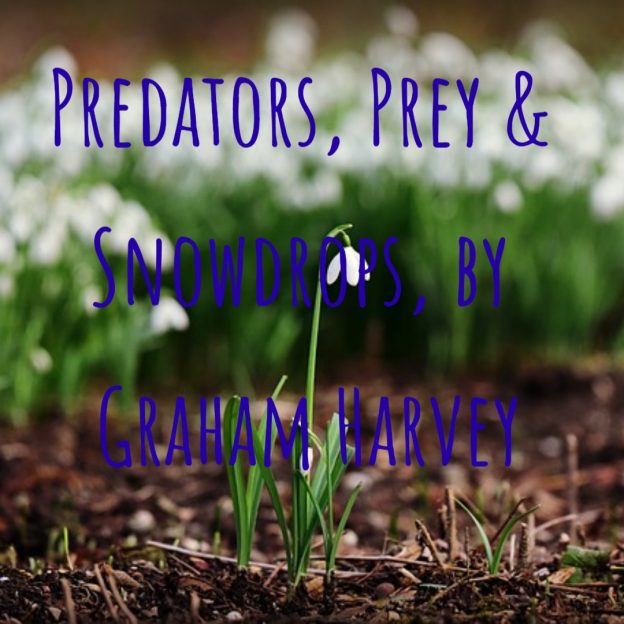Graham Harvey recently published a piece titled “Predators, Prey, and Snowdrops: Recognizing the Nature of the World” over at Counterpoint, a blog which aims to put differing systems of knowledge into conversation for the good of the planet:
Some Amazonian Indigenous people recognize two ways in which living beings relate to others, as predators and prey. More accurately, sometimes a being acts as a predator and sometimes they become prey. A hunter (human, jaguar, deity, cannibal, or other predator) sets out to find prey. But perhaps, somewhere along a forest path, they find themselves hunted. I’ve been thinking about these relations, off and on, for some time–inspired by reading the work of Eduardo Viveiros de Castro, Robin Wright, Laura Rival and other Amazonianists. Reading them alongside works by the philosophers Bruno Latour and Isabelle Stengers (who also read these Amazonianists) has led me to wonder what their observations tell us about the consumerism that marks ways of being human in late modernity or the Anthropocene–or whatever you like / dislike naming this era.
How are these predator/prey relationships helpful in grappling with our global culture and economy? Might the language of predator and prey enable us to see the workings of consumerist modernity more clearly? It certainly seems that sometimes we are preyed on or consumed by processes larger than ourselves. Extractive industries and aggressive marketing assault our world and ourselves. But we are not always victims. We also seek to capture and benefit from opportunities available to us. Even when threatened, we might actively rebel against those determined to turn what we cherish into commodities for further predation. We are not always limited as preyed-upon consumers.

